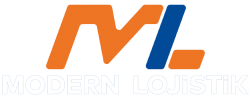
Every disruption in the supply chain directly affects costs as well as delivery time. In the logistics industry, where global competition is gaining momentum day by day, companies need to strategically plan both transportation and every step related to transportation in order to maintain their profitability.
Moving forward with the right strategy is essential to facilitate budget planning. It also helps to increase customer satisfaction and ensure more efficient use of operational resources. The way to reduce costs in logistics should no longer be sought in traditional solutions, but in smart systems, digital management processes and integrated transportation models.
What are the Cost Items in Logistics?
When it comes to cost in logistics, only the transportation fee should not come to mind. The real burden is hidden in the details. All stages in the transportation process have a direct impact on the total cost.
Factors such as fuel costs, driver costs, time losses due to route selection, tolls, insurance costs, storage costs, customs clearance processes and handling costs should all be considered together.
Apart from these, delays caused by improper planning can cause loss of reputation on the customer side, leading to long-term revenue losses. For all these reasons, the transportation process should not only be considered as a transportation service, but should be handled as a strategic management process from start to finish.
Load Optimization with Partial Transportation
It is not always economical to rent a full vehicle for the shipment of small and medium-sized loads. Partial transportation, which has become increasingly preferred in recent years, is the most practical way to balance costs. By choosing this method, the transportation cost is shared by collecting loads belonging to different customers in the same vehicle.
Partial transportation ensures efficient use of load capacity. Thus, fuel and time consumption is reduced without leaving empty space. Thanks to deliveries directed to the same line, delivery time is shortened and total resource consumption is reduced.
The partial model also works much faster on routes with developed logistics infrastructure. Since loads integrated into the routine distribution plan do not require a separate organization, it is advantageous in terms of both planning and budget.
Economic Advantages of Multimodal Transport
The integrated use of different modes of transport is another way to reduce costs. Multimodal transportation allows a shipment to be managed by more than one mode of transport under a single transport document.
With this system, traffic congestion on the road or delays at border crossings can be offset by rail or sea. Taking advantage of the strengths of each mode provides optimization in terms of time and budget.
Managing the entire process with a single document eliminates operational complexity. Compliance with legal regulations becomes easier and the risk of errors in documents and procedures is reduced. This minimizes both operational expenses and potential penalty items.
Operational Efficiency with Route Planning and Digital Tracking
Making deliveries planned, systematic and digitally traceable plays a key role in controlling costs in logistics. Route optimization minimizes fuel consumption and time loss.
Advanced tracking systems analyze vehicles’ real-time locations, speeds, stops and delivery times. This enables more deliveries with less fuel consumption.
Digital tracking systems also facilitate the coordination of teams. The automatic bridge between the field team and the center eliminates communication errors. Managers can measure performance with data from the system and identify inefficient steps and intervene immediately.
Savings Tactics in Warehousing and Customs Processes
A significant portion of logistics costs are incurred during warehousing and customs clearance. If the product waits longer than necessary in the warehouse, it both increases space utilization and reduces the value of the product. Therefore, inventory turnover should be well planned.
Optimization of warehouse space should be done by considering the shelf life of the products, layout plan and release times. Digital inventory management systems come into play during the planning process. Having product movements under control directly affects costs.
Customs clearance does not accept mistakes. The process stops in case of incorrect documents or transactions contrary to the legislation. Moreover, this situation means not only a waste of time but also a serious financial burden. For this reason, it is essential to work with teams that are familiar with foreign trade legislation. Although getting professional support may seem to increase costs in the short term, it provides serious savings in the long term.
Meet Modern Logistics for Smart Logistics, Take Your Costs Under Control
In the transportation world where competition is changing rapidly, it is not possible to reduce costs with traditional methods. To achieve real efficiency, processes need to be managed end-to-end.
Modern Logistics sees transportation as a strategic partnership rather than a transportation service. It produces solutions at every step with services such as partial load organization, multimodal transportation solutions, digital route planning and integrated warehouse management.
All these services are managed from a single center. Thus, disconnections in operational processes are prevented. The data obtained throughout the process is analyzed and areas for improvement are identified through performance reports.
With the right planning, transportation is not only about reaching the destination, but also about paving the way to growth by reducing costs. Modern Logistics is with you to walk this path together!
